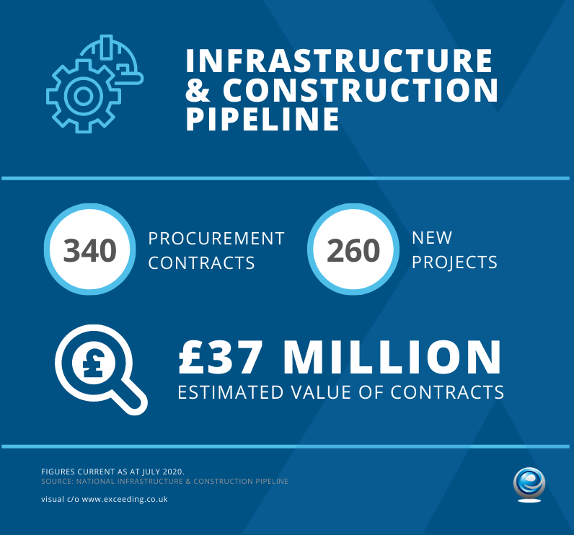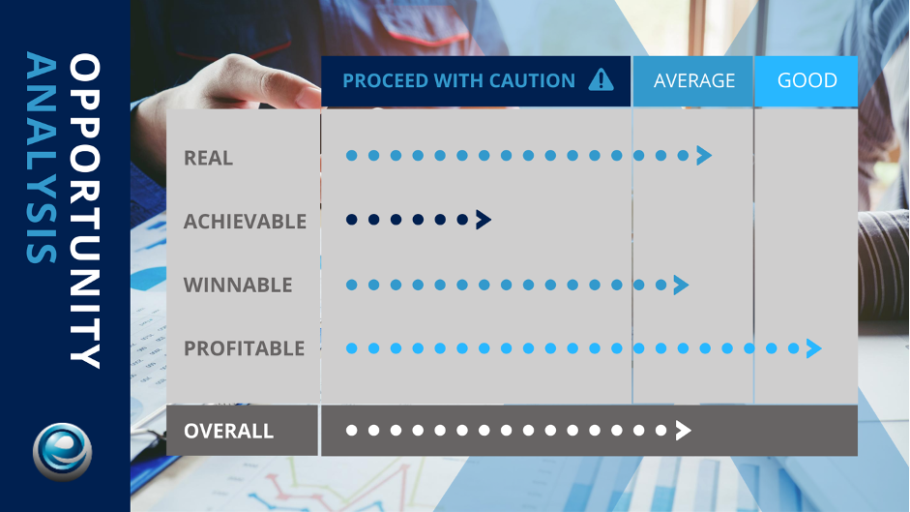Our services.
ABOUT US
Contact us
Our services.
How can we help?
Contact us
Are you bid ready?
By Mick O'Donnell on 1 October 2020
Like many other sectors, the construction sector has seen a Covid-shaped hole in its pipeline over recent months, resulting in increased demand for fewer new business opportunities.
This increase in competition for bids has often led to a less than desirable price war in the tender response process and more importance being placed on the health of supply chains and the ability to demonstrate a focus on mitigating future risks.
There are signs however that the sector is well on its way to recovery.
A recent IHS Markit report found that the residential market had seen unprecedented growth through July – with activity increasing to the greatest extent since September 2014 – and that commercial activity, though experiencing a slower recovery, was on the up as lockdown restrictions are eased and work can recommence.
Tim Moore, Economics Director at IHS Markit, which compiles the survey, notes [via CIPS]:
Construction companies took another stride along the path to recovery in July as a rebound in-house building helped to deliver the strongest overall growth across the sector for nearly five years. Civil engineering and commercial activity are also back in expansion, which has been mainly due to the restart of work that had been delayed during the second quarter of 2020.
Couple this with the fact that the National Infrastructure and Construction procurement pipeline, updated in June, includes 340 procurement contracts across over 260 projects, programmes and other investments and sets out procurements with an estimated contract value of up to £37 billion over the next year within the construction sector.

As procurement consultants in the construction space, we are seeing that it’s even more important in the current climate to have fully defined bidding processes and well executed tender responses.
As competition increases, the scoring criteria for new bids is becoming even more important and tailoring your bid responses to the specific needs of the potential client is essential. It’s no longer an option to churn out the same response each time, so taking time to plan out bid responses to ensure that they are better than competitors and writing tender responses that deliver exactly what the client is asking for, is the key to winning new contracts.
Well, it’s all about planning and process. Broadly speaking it breaks down into 4 key stages: research, planning, delivery, and review and revise.
If you’d like to talk to us more about how to plan out winning bids in construction, visit our bid strategy page.
It may be that until now, your tender responses have been poorly planned, or perhaps not tailored to the client’s specific requirements. Maybe you lack the internal resources to dedicate the time to analysing the requirements and drafting your strongest possible response.
Let’s see if we can help to break it down and look at those key stages in more detail….
Research is all about finding the right opportunity and analysing your suitability.
Even before the ITT documents arrive, we recommend that you analyse the strengths and weaknesses of each opportunity. This is the start of your bid strategy.
We tend to work collaboratively with internal teams on the client’s side to score against the following characteristics:

Once the ‘opportunity analysis’ is completed, it is easier to determine some key elements to include within the response to give the client a better chance of winning or in some cases. It will also help identify opportunities that are not a good fit and perhaps the client should not pursue.
Once the ITT is available, we would run the analysis again to identify if the situation has improved or worsened.
Planning starts with needs analysis:
… and then in planning we proceed to ‘win themes’. Once we understand the actual needs from the groups identified in the needs analysis, we can develop three compelling win themes.
Each win theme will be:
For example:
‘Partnership/quality/local office’ are NOT win themes.
‘We will save you 40% on your initial CapEx with an estimated 20% OpEx saving per year thereafter’ IS a win theme.
Although we refer to ‘win themes’ this is more of a ‘promise’ from the bidder to the customer.
To simply test the win theme, imagine if the Commissioning Manager speaks with the CEO at the coffee machine, the CEO asks, “Why did you choose [Bidder A]?” The answer will never be “partnership working”, it’s far more likely to be related to firm deliverables or promises of improved service and cost savings.
Delivery starts with solution design
How is the bidder going to deliver the win themes? This could be an organisation structure showing the governance, relationships, reporting, innovation forms etc. What form will it take?
Think back to the needs analysis and ensure that this is entirely customer focussed. Standard boilerplate company organisation structures are not the answer here. Bidders should include both customer and the client on their chart, by individual’s name if possible.
Make it clear and simple: roles and responsibilities should be easily understood, and you should use it to describe how the win themes (or promises) are going to be achieved.
Rather than going straight into drafting the tender response, we plan out the key sections using storyboarding. This falls into 2 key parts:
Once you have done this you ask the final signoff authority to agree to the structure and content. When we do the final review, it will be reviewed against the storyboard. This avoids last minute additions, direction changes and amendments (wasting time!).
The final strategic stage will be allocation of the responses and creation of a review timetable. We always ask that you have an internal team review of the first drafts.
For what is usually the primary focus, bid writing now becomes the most straightforward. This is just the completion of the responses against the storyboard. This is wordsmithing of storyboards that have already been clearly planned and populated with information, themes, evidence and the solution.
The review phase should be collaborative and provide meaningful feedback. Review the final responses and give direct (and helpful) feedback to the authors; remember, we are reviewing against the agreed Storyboards.
Check to see
At the presentation stage the customer is looking at you to deliver against their requirements. This is where the deal is won or lost (regardless of what it says in the scoring criteria).
As such, it is such a shame when you hear that the presentation is cobbled together from standard company slides, and the only chance the team have to run through is in a coffee shop an hour before the presentation. Sufficient time and planning should be set aside to nail the presentation.
Our top tip? Ensure your key messaging and solution are used throughout to make it personal to your client, clearly demonstrating the outcomes that you will deliver.
Think back to your needs analysis: Who will be attending from your customer and what do they need to see?
Think about who you taking to meet the client: Although it may seem impressive to take the Sales Director or MD, the customer is more focused on the delivery team and day-to-day project manager. It is important that you demonstrate that you have successfully dealt with likely challenges the customer may experience during implementation.
At this stage, the customer is looking to minimise their risk and the best way to do this is show them experience. Ensure that the team is well rehearsed and knows how to interpret each other’s’ cues, as well as understanding all sections of the presentation should they be questioned.
Your delivery team should be involved throughout the process so that when (not if!) you win the contract; it will be easy to ensure continuity on the client’s side and to seamlessly transition to business as usual.
So, research, planning, delivery, review and revise. Following a well-structured process to prepare and deliver your bid responses will result in an increased win rate.
At eXceeding, we have a national network of bid experts in the construction sector who can help with all aspects of the tender response process from pre-tender readiness to post-award. Our proven method for removing the subjectivity from bid qualification and analysis means our clients see improved win rates and higher profitability.

Mick spent 20+ years working for EDS and HP in the IT and BPO outsourcing industry, solutioning and managing complex Pan-European delivery models. This background has created a real passion for service excellence and delivering solutions that deliver true value.
Be the first to receive regular updates and best practice insights from our bidding experts.
Why not book a free appointment to discuss your requirements in more detail with one of our experts.

Comments
This post has no comments yet...